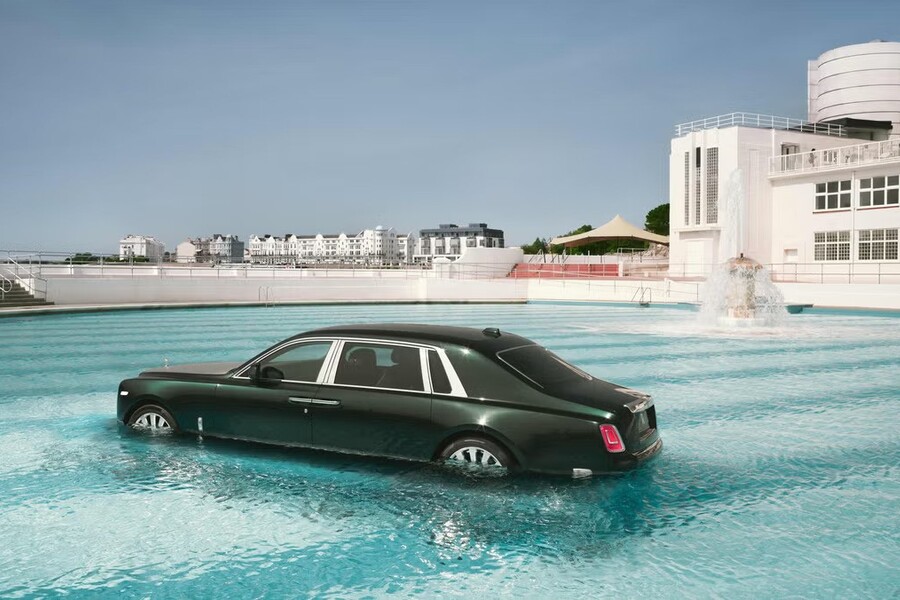Rolls-Royce marked the Phantom’s 100th anniversary with a wink to rock-and-roll folklore, staging a controlled “pool dunk” of a Phantom Extended body at the Art Deco Tinside Lido in Plymouth, U.K. The spectacle nods to the oft-retold tale that The Who’s drummer, Keith Moon, once drove a Rolls-Royce into a hotel swimming pool—an anecdote so embedded in pop culture that its factual accuracy matters less than the image it conjures.
In this centenary vignette, Rolls-Royce didn’t sacrifice a working limousine. The company used an extended-body shell already destined for the scrapyard and partially submerged it for a set-piece photograph. The point was not to show off watertight panel gaps or nautical ambitions, but to place the Phantom back in the cultural frame that has long surrounded it: a car intertwined with music, myths, and moments of extravagant theater.
The Moon story is typically dated to 1971 in Flint, Michigan, and has been debated for decades—some versions swap the Rolls for a different car, others suggest the incident never happened at all. Yet the narrative endures because it suits Moon’s larger-than-life reputation and the era’s excesses. Rolls-Royce leaned into that mythology, treating it as creative raw material for a modern image rather than a claim to be verified.
Tinside Lido, with its fountains and sweeping curves, offered a cinematic backdrop and a secondary layer of pop-history resonance. The site appears in period imagery connected to the Beatles’ Magical Mystery Tour, and the location inevitably recalls another famous Phantom: John Lennon’s psychedelic, Romany-inspired yellow 1967 car, a rolling emblem of Swinging London. That one never took a dip—though the “yellow submarine” jokes write themselves.
There is also a quiet social irony baked into the scene. In Britain, “lido” became a catch-all term for public outdoor pools, a democratized echo of Riviera glamour. Setting the most exclusive of limousines against a civic swimming venue bridges those worlds in a single frame: the Phantom as an object of aspiration, staged where leisure is shared.
For readers wondering what exactly happened and why it matters, the answers are straightforward. Rolls-Royce executed an artful photo performance, not a stunt of destructive bravado. No functioning luxury car was ruined; environmental and safety controls were in place; and the intent was to celebrate a century of Phantom lore by tapping into a story that keeps the model in the wider cultural conversation. Heritage programs often default to concours lawns and commemorative plaques; this one adds humor, self-awareness, and media traction.
As the centenary unfolds—with appearances at major automotive events, bespoke commissions, and curated heritage moments—the “pool Phantom” does what effective brand storytelling should: it reminds audiences that the car has always been more than metal and leather. For generations of musicians from Sir Elton John to contemporary hip-hop artists, the Phantom has served as a visual shorthand for creative success and extravagant taste. Re-creating the Moon legend preserves that association while signaling a brand comfortable poking fun at its own grandeur.
A century in, the Phantom remains both product and pop icon. By revisiting the myth with a controlled, contemporary twist, Rolls-Royce ensures the conversation around its flagship stays buoyant—no matter what history says actually sank into that pool.

